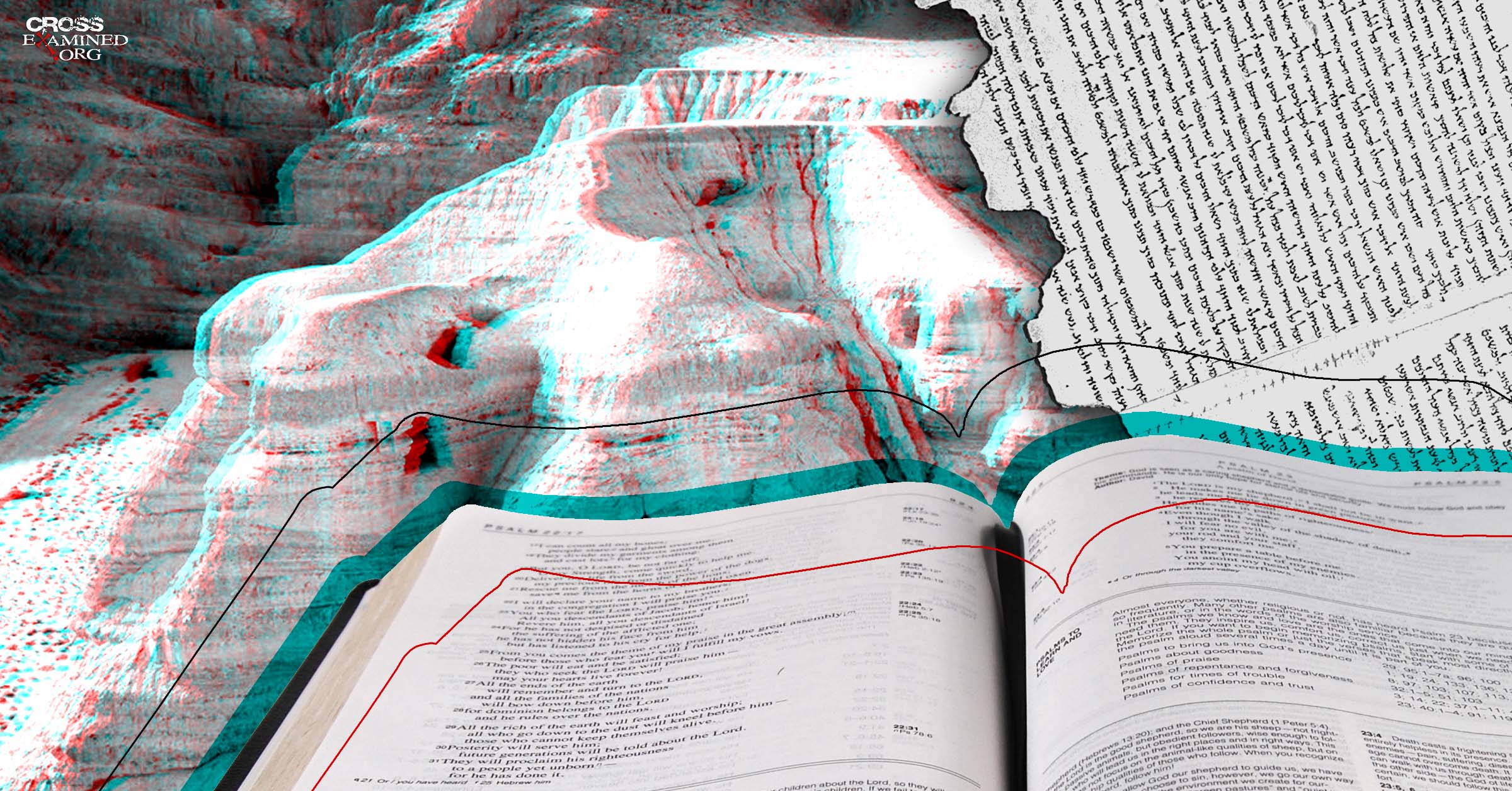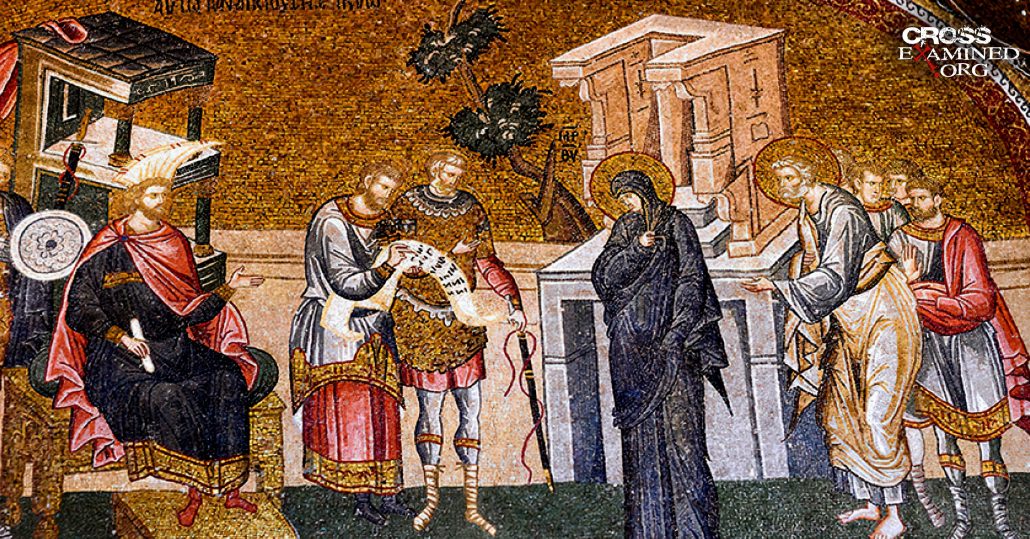How We Got Our Bible: Old Testament Formation
This is the second in a series of nine posts addressing the question of how we got our Bible. Last post dealt with the question of inspiration and inerrancy. This week we turn our attention to the formation of the Old Testament.
Introductory Matters
In the late second century, Tertullian coined the term “Old Testament” to distinguish the Hebrew from the Greek Scriptures. The word “testament” simply means “covenant.” The Old Testament, in its current form, consists of thirty-nine books and was written by dozens of authors over the course of one thousand years.
In the earliest times, biblical authors used a variety of different writing surfaces. They etched into stone (Exod 34:1; Josh 8:32), inscribed on plaster (Deut 27:2-3), engraved on metal (Exod 28:36), and scratched on waxed tablets (Isa 30:8; Hab 2:2). In order to engrave on these surfaces, they used iron pens (Job 19:24; Jer 17:1) and other styluses.
Thankfully, the Egyptians had already invented a paper-like product using papyrus plants long before Moses wrote the law. Biblical authors adopted this writing technology for practical purposes (Jer 36:23). When papyrus wasn’t available, authors would write on stretched and dried animal skins called parchments. Writers used thin-stemmed reeds (Jer 8:8) that they dipped in ink which was usually a mixture of soot and tree sap or oil. Scribes would often wear ink cases around their belts (Ezek 9:2-3).
The First Scripture
Fittingly, God himself wrote the very first Scriptural text. We read in Exodus 31:18, “And he gave to Moses, when he had finished speaking with him on Mount Sinai, the two tablets of the testimony, tablets of stone, written with the finger of God.” Those same tablets were then stored in the Ark of the Covenant along with a jar of manna and Aaron’s staff (Deut 10:5; Heb 9:4).
Moses would later compile God’s writings into the Pentateuch along with his other writings. We have indications that Moses wrote the Pentateuch in stages and not all at one time. Exodus 24:4 reads, “And Moses wrote down all the words of the LORD.” Exodus 17:14 notes, “Then the LORD said to Moses, ‘Write this as a memorial in a book and recite it in the ears of Joshua, that I will utterly blot out the memory of Amalak from under heaven.’”
Scholars debate how Moses learned the contents of Genesis. Some suggest he learned them at Mount Sinai through divine revelation. Others believe it was passed down through oral tradition. And others believe it was a combination of the two.
Stages of Writing
As was previously noted, the Old Testament was not written at one time but over the course of a thousand years. It may be helpful to think of the development of the Old Testament in four stages.
The first stage was at Mount Sinai when Moses wrote the Law. Early on, the Pentateuch functioned like the Jewish canon of Scripture. In fact, Moses commands “You shall not add to the word that I command you, nor take from it, that you may keep the commandments of the LORD your God that I command you” (Deut 4:2). Over the course of hundreds of years, other books were written, but their inclusion into the canon took some time. The Books of Moses, however, were authoritative from the get go.
The second stage of revelation deposits came during the transition from the theocracy to the monarchy. During that era, authors wrote several historical books (Joshua, Judges, Ruth, Samuels), poetry (Psalms), and wisdom literature (Proverbs, Ecclesiastes, Song of Solomon).
The third stage was the time surrounding the Babylonian Exile. Several prophets wrote during this time period (Isaiah, Micah, Hosea, Jonah, Amos, Joel, etc.).
The fourth and final stage was the return from exile. More prophets continued to write (Zechariah and Malachi) as did historians (Chronicles, Ezra, Nehemiah, Esther).
Quoting the Law
Because the Old Testament developed in stages, later Old Testament writers often referred back to the Books of Moses. Perhaps the most quoted text from Moses is Exodus 34:6. The text declares, “The LORD, the LORD, a God merciful and gracious, slow to anger, and abounding in steadfast love and faithfulness.”
Consider how these later Old Testament texts quote Moses:
But your are a God ready to forgive, gracious and merciful, slow to anger and abounding in steadfast love (Neh 9:17).
But you, O Lord, are a God merciful and gracious, slow to anger and abounding in steadfast love and faithfulness” (Psalm 86:15).
That is why I made haste to flee to Tarshish; for I knew that you are a gracious God and merciful, slow to anger and abounding in steadfast love, and relenting from disaster” (Jonah 4:2).
Submitting to the Law
Not only did later Old Testament writers quote from Moses, they explicitly affirmed his authority.
Only be strong and very courageous, being careful to do according to all the law that Moses my servant commanded you. Do not turn from into the right hand or to the left, that you may have good success wherever you go. This Book of the Law shall not depart from your mouth, but you shall meditate on it day and night, so that you may be careful to do according to all that is written in it (Josh 1:7-8).
When David’s time to die drew near, he commanded Solomon his son, saying, I am about to go the way of all the earth. Be strong, and show yourself a man, and keep the charge of the LORD your God, walking in his ways and keeping his statutes, his commandments, his rules, and his testimonies, as it is written in the Law of Moses (1 Kings 2:1-3).
They told Ezra the scribe to bring the Book of the Law of Moses that the LORD had commanded Israel. . . . And he read from it . . . in the presence of the men and the women and those who could understand. And the ears of all the people were attentive to the Book of the Law” (Neh 8:1-3).
The Prophets Use of Prophets
Because the Pentateuch was authoritative from the beginning, we find far more references to Moses than any other Old Testament author. That said, the prophets still recognized the authority of other prophets who lived closer to their time. Consider Daniels words:
“In the first year of his reign, I, Daniel, perceived in the books the number of years that, according to the word of the LORD to Jeremiah the prophet, must pass before the end of the desolations of Jerusalem, namely seventy years” (Dan 9:2).
Even though Jeremiah wrote only a few decades prior, Daniel still recognized his divine authority.
Zechariah also recognizes the divine authority of his prophetic predecessors. He writes:
Then the word of the LORD of hosts came to me: Say to all the people of the land and the priests, When you fasted and mourned in the fifth month and in the seventh, for these seventy years, was it not for me that you fasted? . . . Were not these the words that the LORD proclaimed by the former prophets, when Jerusalem was inhabited and prosperous? (Zech 7:4-7).
Authors and Dates
Admittedly, we cannot be too precise on some of the authors and dates of the Old Testament books, especially some of the historical works. That said, consider the following chart which details the authors and dates of each Old Testament book.[1]

Use of Sources
Inspiration does not imply mechanical dictation. While biblical authors did dictate God’s word from time to time, they also employed other methods such as researching historical sources. Consider the following examples:
Therefore it is said in the Book of the Wars of the Lord (Num 21:14).
And the sun stood still, and the moon stopped, until the nation took vengeance on their enemies. Is this not written in the Book of Jashar? (Josh 10:13).
Now the rest of the acts of Solomon, and all that he did, and his wisdom, are they not written in the Book of the Acts of Solomon? (1 Kings 11:41).
Now the rest of the acts of Joram, and all that he did, are they not written in the Book of Chronicles of the Kings of Judah? (2 Kings 8:20).
What these texts demonstrate is that the biblical authors didn’t invent this stuff. They did careful research before compiling their works.
Editors
Inspiration does not preclude editing. In other words, God not only inspired authors, he inspired editors to modify and rearrange the text. Without exception, the New Testament writers, and even Jesus himself, affirm Mosaic authorship of the Pentateuch (Matt 8:4; 19:8; Mark 7:10; 12:26; Luke 16:31; 20:37; 24:44; Acts 3:22; 15:1; 26:22; 28:23; 1 Cor 9:9; Heb 9:19). That said, we have clear indications of later editing by Jewish scribes. Consider the following texts:
Now the man Moses was very meek, more than all people who were on the face of the earth (Num 12:3).
So Moses the servant of the LORD died there in the land of Moab, according to the word of the LORD, and he buried him in the valley in the land of Moab opposite Beth-peor; but no one knows the place of his burial to this day (Deut 34:5-6).
Did Moses call himself the meekest person on the earth and report his own death and burial? And following his death, did he report that no such prophet has arisen since the time of Moses? Doesn’t that last statement assume that some time has passed since his death? In short, while Moses penned the Pentateuch, later scribes edited his work into their present form.
Preservation
Knowing that it took a thousand years to write the Old Testament (1400-400 BC), how confident can we be in its preservation? After all, we know that there was a period of time when it seems like the text had been lost and out of use (2 Kings 22-23).
Apparently, “clans of scribes” existed during the Old Testament era to copy and preserve the Hebrew Bible (1 Chron 2:55). Since then, Jewish scribes have meticulously copied texts for the same purposes. Perhaps the most famous of these scribes are the Masoretes and the Ben Asher family from the fifth century AD. These professional copyists counted the number of words on every page and knew the number of words in every book as well as the exact middle word and letter of every book to ensure that they copied accurately.
Additionally, the Masoretes added vowel markings to the otherwise vowel-less text. Up until the 1940s, the earliest Hebrew texts in our possession were Masoretic texts dating to the 9th and 10th centuries.
Dead Sea Scrolls
In 1947, a shepherd by the name of Muhammed edh-Dhib was out looking for some of his sheep along the coast of the Dead Sea. As he passed by a cave, he tossed a rock inside hoping to hear the bleating of sheep. Instead, he heard pottery shattering. That shattered jar led to one of the most significant archaeological finds of the twentieth century.
Archaeologists have since uncovered over a thousand ancient Jewish documents from dozens of nearby caves dating from 250 BC to AD 65. These texts belonged to the Qumran community otherwise known as the Essenes. These people functioned much like Jewish monks, isolated from much of society. The Qumran community most likely stashed their sacred texts in these caves during the war with Rome (AD 68-70) hoping to return to them once the dust settled. Unfortunately, they all died during the war, so their texts remained hidden for two thousand years.
Among these documents are every book of the Old Testament except for Esther. Perhaps the most significant text is a complete Isaiah scroll, consisting of twenty-seven sheets of parchment sewn end-to-end. It measures twenty-three feet in length. The scroll dates to 120 BC—a thousand years older than the previous oldest text. Most significantly, the Isaiah scroll hardly differs from the Masoretic text from the tenth century, demonstrating that Jewish scribes carefully preserved the original text.
Old Testament Canon
The next post will consider the Septuagint, the apocrypha, and the Old Testament Canon.
*For more on this topic, read Timothy Paul Jone’s helpful book How We Got the Bible.
References:
[1] This chart is modified from Timothy Paul Jones, How We Got the Bible, 31-33.
Recommended resources related to the topic:
Oh, Why Didn’t I Say That? Does Science Disprove God? by Dr. Frank Turek (DVD and Mp4)
Two Miracles You Take With You Everywhere You Go by Frank Turek DVD, Mp3 and Mp4)
Why We Know the New Testament Writers Told the Truth by Frank Turek (DVD, Mp3 and Mp4)
__________________________________________________________________________________________________________________________________________________
Ryan Leasure holds a Master of Arts from Furman University and a Masters of Divinity from the Southern Baptist Theological Seminary. Currently, he’s a Doctor of Ministry candidate at the Southern Baptist Theological Seminary. He also serves as a pastor at Grace Bible Church in Moore, SC.
Original Blog Source: https://bit.ly/30ACsei











